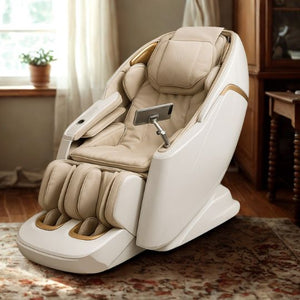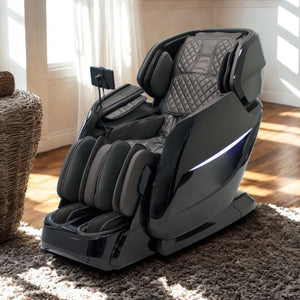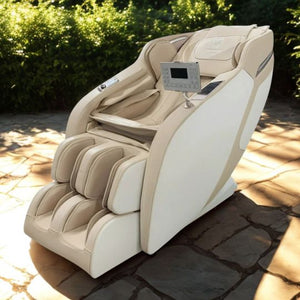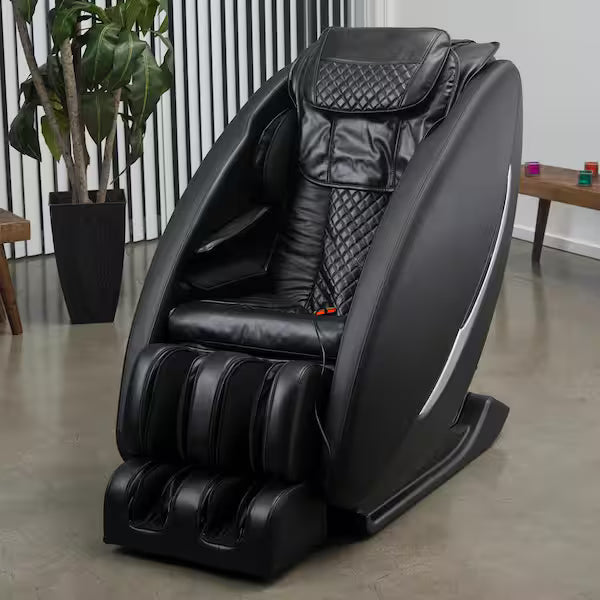Health prediction by massage chair
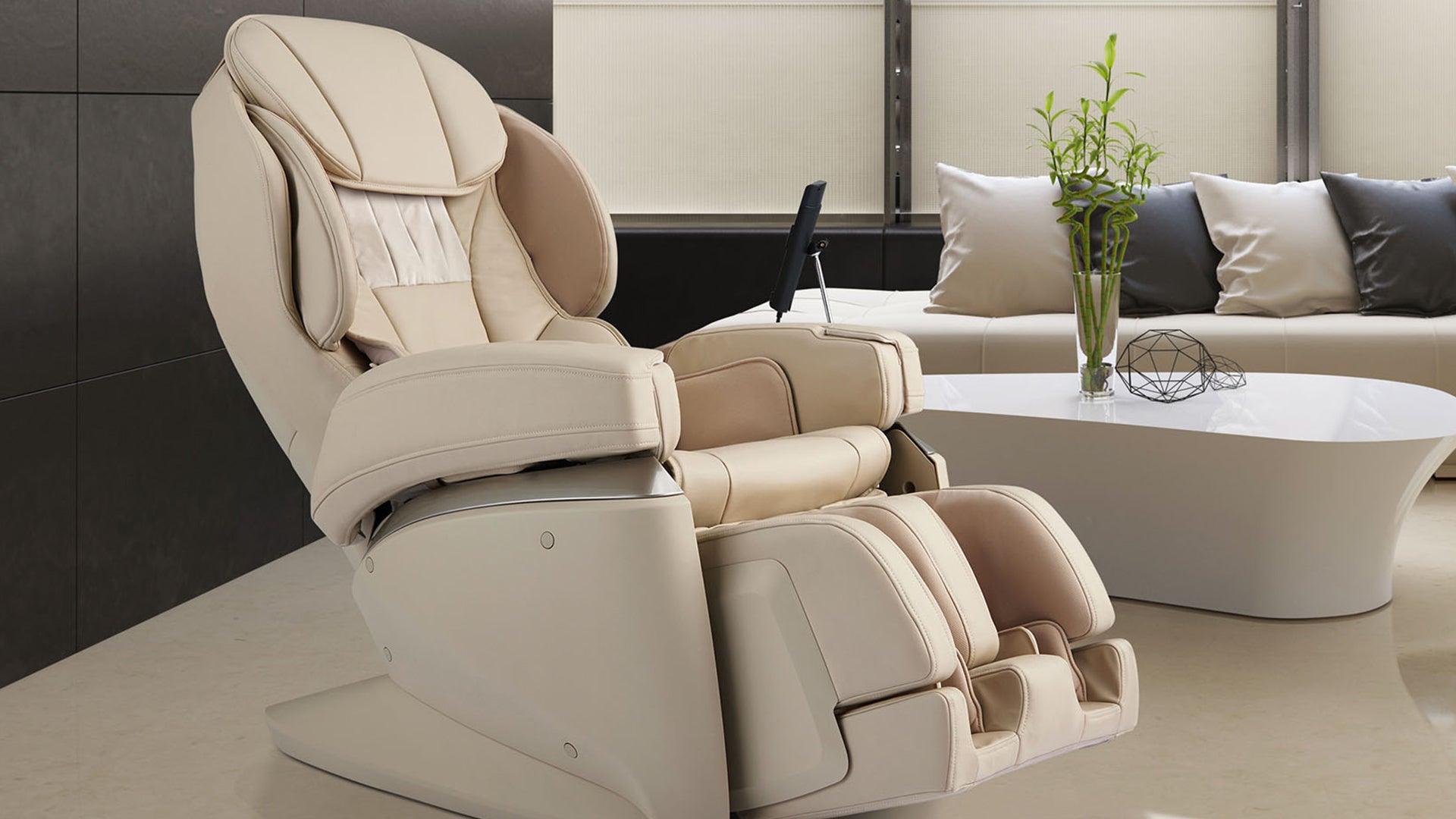
Introduction: The Evolution of Massage Chairs
When massage chairs were first introduced decades ago, they were seen as luxury items designed primarily for relaxation. Early models offered basic vibration and kneading functions, imitating traditional massage techniques. Over the years, however, the technology has undergone dramatic transformations.
Today, massage chairs are not just about comfort or muscle relief; they are increasingly becoming sophisticated health companions. Some advanced models integrate artificial intelligence (AI), biometric sensors, and predictive algorithms that can provide insights into an individual’s health condition. This capability—known as health prediction—is poised to revolutionize how people monitor and maintain their wellness at home.
In this article, we will explore the concept of health prediction by massage chairs, the technology behind it, potential benefits, limitations, and what it means for the future of personalized healthcare.
Section 1: Understanding Health Prediction
What Is Health Prediction?
Health prediction is the process of using data—such as biometric signals, lifestyle patterns, and historical health information—to forecast potential health issues before they become serious. It is an approach rooted in preventive healthcare.
For example, by analyzing heart rate variability, blood oxygen levels, posture, and muscle tension, modern devices can estimate the risk of cardiovascular strain, musculoskeletal disorders, or even sleep-related problems.
Why Does It Matter?
Most people only seek medical help when symptoms become noticeable. Health prediction offers an alternative: spotting subtle changes before they escalate. If a massage chair can detect early signs of stress, poor circulation, or chronic muscle tension, users can take corrective action immediately—whether through lifestyle changes, exercise, or medical consultation.
Section 2: How Massage Chairs Collect Health Data
Embedded Sensors
Modern massage chairs are no longer just padded seats with motors. They often come equipped with:
-
Heart rate monitors (using photoplethysmography sensors)
-
Breathing rate sensors
-
Temperature sensors to detect inflammation or abnormal heat spots in muscles
-
Posture trackers using pressure distribution mapping
-
Blood oxygen saturation detectors
These sensors gather real-time physiological data while the user relaxes.
Artificial Intelligence Integration
Once collected, the data is analyzed by algorithms. AI systems in massage chairs can learn individual baselines and detect deviations. For instance, if your average resting heart rate is 72 bpm but suddenly rises to 90 during relaxation, the chair may flag this as unusual and recommend further monitoring.
Connectivity
Some chairs can sync with smartphones, smartwatches, or healthcare apps, consolidating all wellness data in one ecosystem. This integration allows long-term health tracking and personalized recommendations.
Section 3: The Science Behind Health Prediction in Massage Chairs
Muscle Tension as a Health Indicator
Chronic muscle tightness often reflects underlying stress, poor ergonomics, or circulatory issues. By mapping patterns of stiffness, the massage chair can detect repetitive strain injuries or stress-related problems before they manifest as pain.
Circulatory Insights
Massage chairs often use airbags and rollers that simulate lymphatic drainage and improve circulation. By monitoring how muscles respond to compression and relaxation, the system can infer whether blood flow is optimal. Poor circulation may indicate cardiovascular risks.
Stress and Heart Rate Variability
Heart rate variability (HRV)—the variation in time between heartbeats—is a critical measure of stress resilience. Advanced massage chairs monitor HRV to predict risks of anxiety, burnout, or cardiovascular strain.
Sleep Prediction
By analyzing relaxation responses, breathing patterns, and stress markers, massage chairs can predict sleep quality. For individuals with insomnia or irregular sleep cycles, this data can be invaluable.
Section 4: Benefits of Health Prediction in Massage Chairs
-
Early Detection of Issues – Identifying potential problems before they escalate.
-
Personalized Massage Programs – Adjusting techniques to match a user’s unique health needs.
-
Stress Management – Real-time tracking helps users manage daily stress more effectively.
-
Encouragement of Preventive Healthcare – Shifts focus from treatment to prevention.
-
Integration with Digital Health Ecosystems – Data can be shared with medical professionals for more comprehensive care.
Section 5: Practical Applications
For Athletes
Athletes can benefit from precise tracking of muscle fatigue and recovery patterns, reducing the risk of overtraining.
For Office Workers
Sitting for long hours can lead to back pain, poor posture, and stress. Health-predicting massage chairs can monitor spinal alignment and alert users about posture correction.
For Seniors
Elderly users face challenges such as poor circulation, joint stiffness, and cardiovascular risks. Predictive features help them track health without frequent hospital visits.
For Everyday Wellness
Even for people without diagnosed conditions, predictive massage chairs encourage healthier daily routines.
Section 6: The Role of AI and Big Data
The real strength of predictive massage chairs lies in their ability to learn over time. With AI, these chairs can create personalized health profiles. Imagine a chair that not only massages but also:
-
Warns of dehydration based on skin conductivity.
-
Recommends stretching routines when it detects stiffness.
-
Suggests sleep hygiene practices when relaxation responses are weak.
By pooling anonymous user data (with consent), manufacturers can also improve their predictive models, making future chairs even more accurate.
Section 7: Ethical Considerations and Limitations
Privacy Concerns
Health data is sensitive. Users must be assured that their biometric data is securely encrypted and not exploited for commercial purposes.
Accuracy
While massage chairs can provide valuable insights, they should not replace professional medical diagnostics. Predictive results are indicative, not definitive.
Accessibility
Advanced models with predictive features can be expensive. This raises questions about equitable access to preventive healthcare technology.
Section 8: Massage Chair Cambodia – A Growing Trend
In Cambodia, wellness culture is expanding rapidly, and demand for modern relaxation and health technologies is rising. Many urban households and wellness centers are beginning to see the value of advanced massage chairs not just as luxury furniture but as essential health tools.
For example, introducing a Massage chair Cambodia model with predictive health monitoring could revolutionize personal healthcare in the country. Busy professionals, elderly citizens, and even fitness enthusiasts would gain easy access to preventive wellness at home.
Moreover, local spas and clinics could integrate predictive chairs into their services, offering clients not just massage but personalized health assessments. The combination of traditional Cambodian wellness practices with modern predictive technology could create a unique market advantage.
Over the next decade, we can expect Massage chair Cambodia adoption to grow, particularly as awareness about preventive healthcare increases. As the technology becomes more affordable, it will likely move from luxury living rooms into middle-class households, becoming a mainstream tool for health management.
For international manufacturers, Cambodia represents an emerging market where Massage chair Cambodia products could set new standards in healthcare innovation. When combined with government efforts to improve public health and wellness infrastructure, predictive massage chairs could play a pivotal role in reducing lifestyle-related diseases.
It’s easy to imagine a future where a Massage chair Cambodia is not just a piece of furniture but a daily health partner for thousands of families.
Section 9: The Future of Predictive Healthcare at Home
The integration of predictive analytics in massage chairs is only the beginning. In the near future, we may see:
-
Integration with Telemedicine – Massage chairs sending real-time reports directly to doctors.
-
Virtual Health Coaching – AI-powered advice on diet, exercise, and stress management.
-
Full-Body Scanning – Chairs that assess posture, weight distribution, and bone alignment.
-
Predictive Alerts – Notifications about potential risks such as hypertension or chronic stress before symptoms appear.
Conclusion
Massage chairs have traveled a long journey from simple relaxation devices to intelligent healthcare assistants. With predictive features, they offer not only comfort but also proactive health monitoring. By combining biometric sensors, AI, and data analytics, these chairs are paving the way toward preventive healthcare at home.
For individuals seeking both relaxation and long-term health benefits, investing in such technology can be life-changing. And for emerging markets like Cambodia, the rise of the Massage chair Cambodia industry signals a future where wellness and healthcare converge seamlessly.
The future of health prediction by massage chairs is not just about comfort—it’s about empowering people to take control of their well-being, one massage session at a time.

